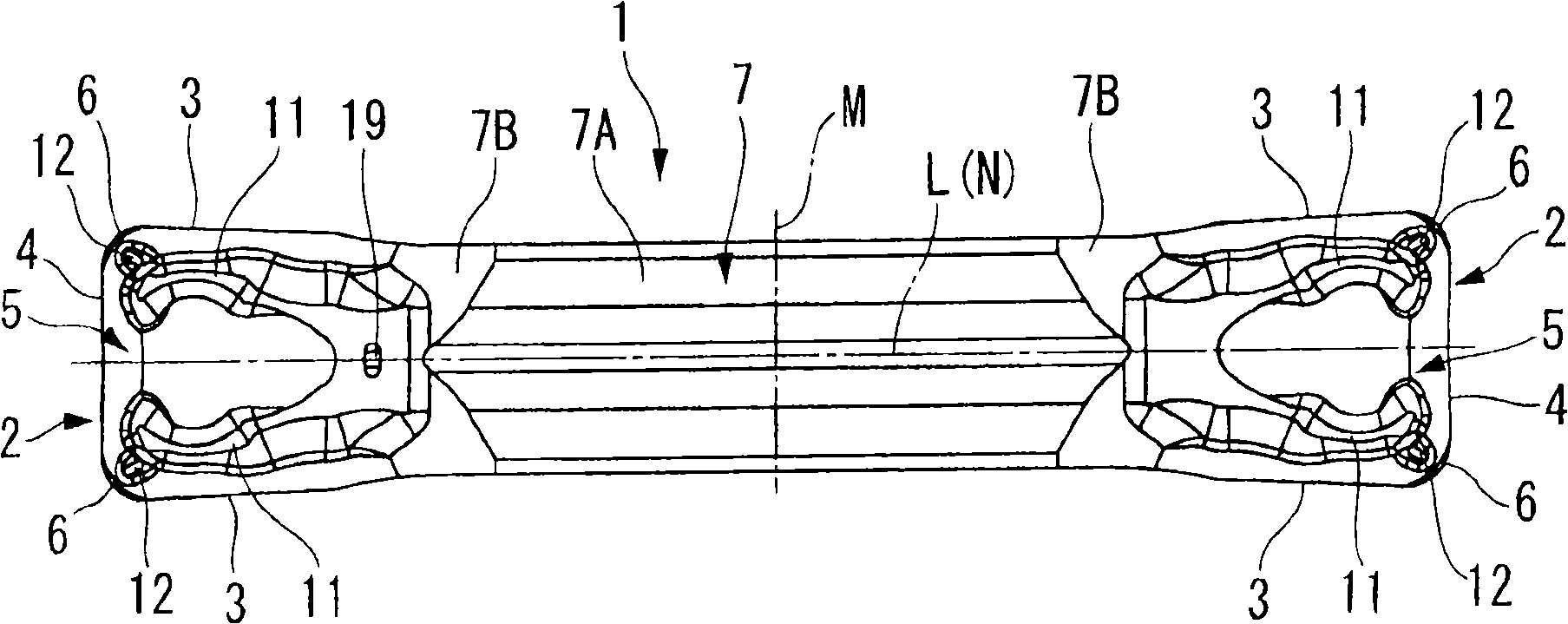Cutting insert
A technology of cutting inserts and inserts, applied in turning equipment, accessories of toolholders, tools for lathes, etc., can solve problems such as damage to accuracy and quality, unstable chip control, and low height, to prevent accuracy and quality. Damage, long-term stability and smoothing, the effect of suppressing the increase in cutting resistance
- Summary
- Abstract
- Description
- Claims
- Application Information
AI Technical Summary
Problems solved by technology
Method used
Image
Examples
Embodiment Construction
[0059] Figure 1 to Figure 8 It is a figure which shows 1st Embodiment of the cutting insert of this invention. In the present embodiment, the insert body 1 is formed of a hard material such as cemented carbide, and has a substantially square shaft shape (square column shape) extending along the axis L. As shown in FIG. The blade body 1 is formed approximately symmetrically with respect to a plane M which is orthogonal to the axis L and which is located in the length direction of the blade body 1 (direction of the axis L, Figure 2 ~ Figure 4 in the left and right directions) in the center. Furthermore, the blade main body 1 has a symmetrical shape with respect to the plane N as well. The plane N is orthogonal to the plane M and is located in the width direction of the blade body 1 ( figure 2 and Figure 4 in the up and down direction, in Figure 5 Middle is the left-right direction) center, including the axis L and in the thickness direction of the blade main body 1 ( ...
PUM
 Login to View More
Login to View More Abstract
Description
Claims
Application Information
 Login to View More
Login to View More - Generate Ideas
- Intellectual Property
- Life Sciences
- Materials
- Tech Scout
- Unparalleled Data Quality
- Higher Quality Content
- 60% Fewer Hallucinations
Browse by: Latest US Patents, China's latest patents, Technical Efficacy Thesaurus, Application Domain, Technology Topic, Popular Technical Reports.
© 2025 PatSnap. All rights reserved.Legal|Privacy policy|Modern Slavery Act Transparency Statement|Sitemap|About US| Contact US: help@patsnap.com



